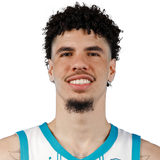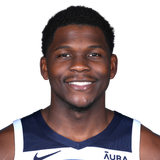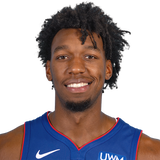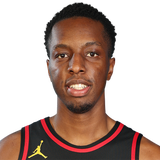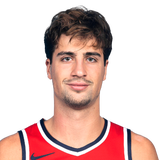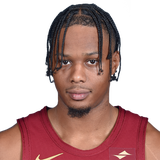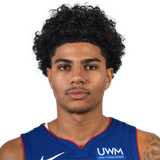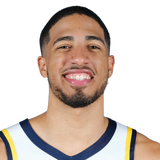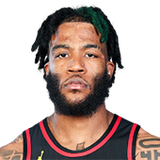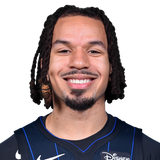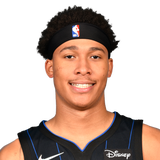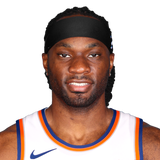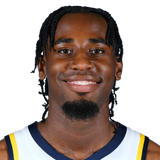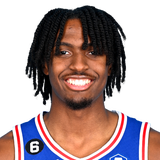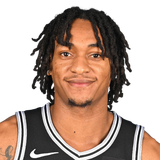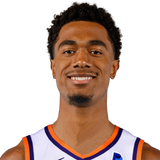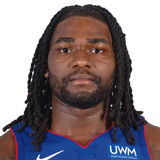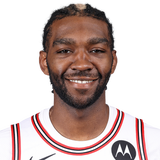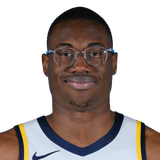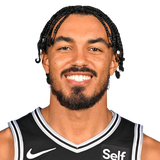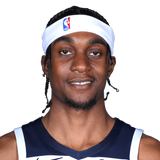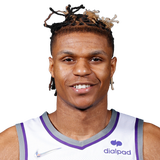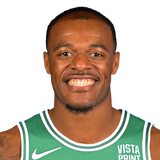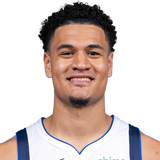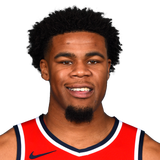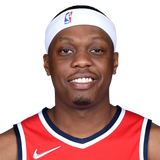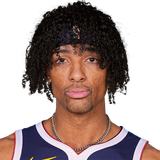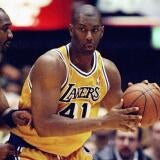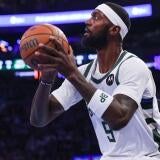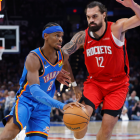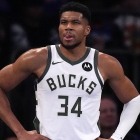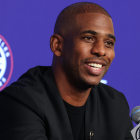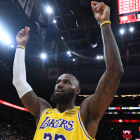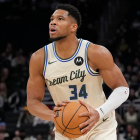2020 NBA Mock Draft: LaMelo Ball goes No. 1 as Warriors pick prospect with the highest upside
Ball, who has developed into an incredible playmaker and passer, is a solid pick for the top selection in the NBA Draft

The 2020 NBA Draft is still a ways off -- pushed back to October because of the COVID-19 pandemic that suspended the NBA season back in March. All things considered, it's not the biggest deal in the world. But it's obviously different and challenging for the prospects anxious to find out where they'll play, and live, for the foreseeable future.
Patience has never been more important. Either way, eventually, the world's best prospects will hear their names called, virtually or in-person.
And the first name called, I think, should be LaMelo Ball, a player I initially evaluated when he was just 13 years old. We were in Las Vegas. He was playing with his older brothers against 17-year-olds and actually producing. He was little. And he seemed a little out of place. But he was still a creative-shot maker, and brilliant passer, and, even way back then, he looked, at least to me, like a possible future NBA player.
Fast forward five years, and LaVar's youngest son isn't so little anymore. He's now a 6-foot-7 point guard. Super-skilled. Super-smart. And if you're looking for the prospect with the highest upside in the 2020 NBA Draft, the former Chino Hills High star is your guy, which is why I have him projected as the No. 1 overall pick in my latest mock draft.
Please note, team needs were NOT taken into consideration at all for this mock draft because, at this time, I'm more interested in having a proper order than I am in making sure somebody is a good fit for the franchise theoretically making the selection. I'll adjust for team-needs when the lottery order is set on Aug. 25..
Round 1 - Pick 1
The first pick in any NBA Draft should be the player the franchise selecting believes has the best chance to be a future All-Star. And, in this draft, I think, Ball is that player. The 6-6 point guard, who is still only 18 years old, has broken out of his family's shadow and developed into an incredible playmaker and passer who fared well playing professionally in Australia this past season. The shooting percentages weren't great. And the mechanics need some work. But when you focus on what he can do, and how rare it is for somebody his age to do the things he can already do, Ball becomes the most sensible option to go No. 1.
| |||||||
Round 1 - Pick 2
Obi Toppin is a former zero-star recruit who earned CBS Sports National Player of the Year honors after averaging 20.0 points and 7.5 rebounds while shooting 63.3% from the field and 39.0% from 3-point range this past season. He's a super-athletic forward who dunks everything -- he actually led the nation in dunks -- and consistently makes jumpers in pick-and-pop situations. Yes, the fact that he's already 22 years old is an issue worth taking into account. But it will not -- or, at least, it should not -- overshadow the idea that Toppin has a chance to be the most impactful player selected in this draft.
| |||||||
Round 1 - Pick 3
Anthony Edwards is a big, strong and athletic guard who is one of at least four players who could reasonably be selected first overall. The 6-5 freshman averaged 19.1 points and 5.2 rebounds in his one season at Georgia but only shot 40.2% from the field and 29.4% from 3-point range. So he was incredible in spots but largely up and down and inefficient. And though I clearly see the same potential for stardom that everybody else sees with Edwards, I simply think Ball and Toppin will have better NBA careers.
| |||||||
Round 1 - Pick 4
James Wiseman's decision to quit on Memphis midseason raised eyebrows with some NBA executives who were left wondering if the 7-1 center is wired to be great. But his natural ability is so overwhelming that he won't slip too far in a draft devoid of high-end talent. Obviously, this is the worst time in the history of professional basketball to be a center and only a center because the position has never been less valued. But it's still hard to imagine a physical specimen like Wiseman going any lower, or at least much lower, than fourth or fifth.
| |||||||
Round 1 - Pick 5
Onyeka Okongwu mostly operated off the national radar this past season because he played for an unranked team on the West Coast. But he was fantastic rather quickly -- averaging 16.2 points and 8.6 rebounds while shooting 61.6% from the field. He's the main reason USC won 16 of its first 20 games and would've been in the NCAA Tournament if the NCAA Tournament would've been played. Is he an undersized big? Yes, probably. But he's an undersized big who can play multiple positions. And, either way, the NBA is now littered with undersized bigs. So even though Okongwu wasn't thought of this way coming out of high school, it's now reasonable to call him the second-best big prospect in the draft.
| |||||||
Round 1 - Pick 6
Deni Avdija, a former Most Valuable Player of the FIBA Under-20 European Championship, should be the first non-American international prospect to come off the board. He's a 19-year-old Israeli who performed well for Maccabi Tel Aviv in games leading up to the season being suspended. At 6-9, he's tall enough to play power forward and skilled enough to play on the wing. And his shooting has undeniably improved. So, according to most evaluators, Avdija now projects as a likely top-10 pick.
| |||||||
Round 1 - Pick 7
Isaac Okoro was only a borderline top-40 prospect coming out of high school but quickly emerged as one of college basketball's best freshmen. He averaged 12.9 points and 4.4 rebounds for an Auburn team that started 15-0 and finished 24-4 when Okoro was healthy and available. His athleticism and ability to shut down opposing wings -- thanks to unusually great defensive instincts for an 18-year-old -- are his best attributes. A franchise looking for a high-upside player who impacts winning in a variety of ways should make him a top-10 pick.
| |||||||
Round 1 - Pick 8
Killian Hayes is an American-born lead guard who was raised in France. The 18-year-old shared Most Valuable Player honors in the 2017 Jordan Brand Classic international game and was averaging 12.0 points and 5.6 assists in Germany this past season before the schedule was halted. Hayes is better inside the arc than he is outside the arc, which is one way to say his 3-point shooting must improve. But he already does enough things well enough to make him worthy of a lottery pick.
| |||||||
Round 1 - Pick 9
Tyrese Haliburton, like Toppin, is a good example of a mostly unheralded high school prospect who became a statistical monster in college. The 6-5 sophomore averaged 15.2 points, 6.5 assists and 5.9 rebounds while shooting 50.4% from the field and 41.9% from 3-point range this past season before suffering an injury in early February that ended his college career. So he's a lead guard with size who consistently makes shots. And there's not a franchise in the NBA that couldn't use a player who can reasonably be described that way.
| |||||||
Round 1 - Pick 10
The more I talk with front-office executives, the more I'm convinced Saddiq Bey has a chance to be a steal in this draft -- especially if he slips out of the top 10. The 6-8 forward was merely a sub-125 recruit in the Class of 2018, the least-heralded prospect in Villanova's four-player class. But he quickly developed into an intriguing prospect who averaged 16.1 points (while making 45.1% of his 3-point attempts) this past season for a Villanova team that shared the Big East title. He's versatile on both ends and an ideal wing prospect for the modern NBA.
| |||||||
Round 1 - Pick 11
Cole Anthony's in-season knee surgery that limited him to just 22 games is the biggest reason -- not the only reason, but definitely the biggest reason -- the Tar Heels' season spiraled. Remember, they were 6-3 with a victory over the eventual Pac-12 champion (Oregon) before Anthony got hurt but never the same afterward. The 6-3 point guard's shooting numbers as a freshman leave something to be desired -- but he took so many tough shots, sometimes out of necessity because of a less-than-inspiring supporting cast -- that it's hard to know exactly what to make of them. But, either way, Anthony still averaged 18.5 points, 5.7 rebounds and 4.0 assists for the Tar Heels. And though he no longer is a real option at No. 1 like he was believed to be this time last year, a spot in the lottery is still attainable.
| |||||||
Round 1 - Pick 12
R.J. Hampton's decision to skip college and play professionally for a team based in New Zealand this past season contributed to the G League creating a program for elite prospects and then aggressively pursuing them. So he's already made an impact on the sport, for better or worse. Hampton spent part of the pandemic training with former NBA players Penny Hardaway and Mike Miller in Memphis and projects as a valuable combo guard for years to come, thanks to a versatile offensive game that allows him to score and make plays in lots of ways.
| |||||||
Round 1 - Pick 13
The ceiling on Memphis' season was lowered drastically when James Wiseman quit, but it's hard to argue that Precious Achiuwa didn't personally benefit at least statistically. The super-athletic forward averaged 15.8 points and 10.8 rebounds -- and was the only freshman in the sport to average a double-double. He's terrific in transition, effective around the rim, comfortable away from it and capable of guarding smaller players in space. All of that, combined with a tremendous motor, should be enough to make Achiuwa a lottery pick.
| |||||||
Round 1 - Pick 14
It's true that Aaron Nesmith only played 14 games as a sophomore before suffering a season-ending foot injury -- meaning the sample size is on the smallish side. But it can't be ignored that the 6-6 guard made 52.2% of the 115 3-pointers he attempted. That's an incredible percentage. And when you consider Nesmith has great size for his position, plus a good body, it's not crazy to think he should be a top-15 pick.
| |||||||
Round 1 - Pick 15
Tyrese Maxey got 26 points in the season-opening win over Michigan State while showing all of the things that made most assume he'd be UK's leading scorer. But, for much of the season, the 6-3 freshman was inconsistent while making just 29.2 percent of his 3-point attempts. So his one year in college was a little disappointing relative to preseason expectations. Regardless, Maxey still mostly projects as a top-15 pick because he measures well, presumably can be a better shooter than he showed this season, and is really good at scoring inside the arc in creative ways.
| |||||||
From
Brooklyn Nets
Round 1 - Pick 16
Devin Vassell's numbers -- 12.7 points and 5.1 rebounds per game -- don't jump off the screen, but that has more to do with playing at Florida State than anything else. The Seminoles had four players who averaged between 9.2 points and 12.7 points. So Leonard Hamilton's team was balanced at the top, possibly to the detriment of Vassell. Either way, what's important to note is that the 6-7 guard made 41.7% of his 168 3-point attempts over the past two seasons. And what that suggests is that he's a two-way wing who can make jumpers reliably, which is why he should go in the top 20 of this draft.
| |||||||
From
Memphis Grizzlies
Round 1 - Pick 17
Theo Maledon is a skilled athlete, one who previously became the youngest LNB All-Star in history. He missed time with an injury while playing professionally in France this past season and was mostly underwhelming -- although, in fairness, he played better as things progressed. But the talent that made him an interesting prospect at a young age still exists and is attractive to NBA executives selecting in this range.
| |||||||
Round 1 - Pick 18
Isaiah Stewart was perhaps the only good thing about Washington's wildly disappointing season that culminated with the Huskies finishing last in the Pac-12. The 6-9 center led his team in points (17.0), rebounds (8.8) and blocks (2.1). He was great -- but how well will it translate at the next level? That's the question. And, for what it's worth, scouts acknowledge guarding in space could be a problem. But Stewart's high motor, incredible production, and better-than-some realize skill set should keep him in the top 20.
| |||||||
From
Indiana Pacers
Round 1 - Pick 19
Patrick Williams is probably more of a long-term investment than an instant-impact rookie considering he's still only 18 years old and developing. But the 6-8 forward measures well and was a key piece on a Florida State team that won the Atlantic Coast Conference regular-season title. He performed strongly down the stretch while scoring in double figures in five of the Seminoles' final seven games. So, again, it's possible he won't help an NBA team much next season. But what Williams could become in a year or two is enough to generate attention in the back half of the first round.
| |||||||
From
Philadelphia 76ers
Round 1 - Pick 20
Kira Lewis will still only be 19 years-old on draft night even though he's played two seasons of college basketball. So he's young. And he's light. But the 6-3 point guard was really productive this season -- averaging 18.5 points, 5.2 assists and 4.8 rebounds for an Alabama team that finished 60th at KenPom. Lewis made an incredible 48.8% of his 3-point attempts in the Crimson Tide's final seven games. So it appears he can be a reliable, and perhaps terrific, perimeter shooter as a professional, not to mention a real steal this deep in this draft
| |||||||
Round 1 - Pick 21
Not all prospects who return for their sophomore seasons actually help themselves from a draft-stock perspective, but Jalen Smith clearly did. He added strength, improved his field goal percentage by 4.6 points, his 3-point percentage by 8.0 points, and averaged more points (15.5), rebounds (10.5) and blocks (2.4) than he did the year before. The result was Maryland winning a share of the Big Ten title and Smith solidifying himself as a real option in the first round who should be able to play both the 4 and the 5 in the NBA.
| |||||||
From
Houston Rockets
Round 1 - Pick 22
There's nothing too flashy about Tre Jones. He doesn't create many highlights nor is he a great shooter. But he remains a terrific run-the-team point guard who really defends on one end of the court, and really creates opportunities for his teammates on the other. He averaged 16.2 points and 6.4 assists this season -- and actually shot it well enough from the perimeter down the stretch to get his 3-point percentage up to a respectable 36.1. So there's enough good stuff about him to make selecting him in the 20s a sensible option for any franchise comfortable spending a pick in this range on someone whose ceiling might be lower than others, but whose floor is likely higher.
| |||||||
Round 1 - Pick 23
Nico Mannion only shot 32.7% from 3-point range this season, which obviously isn't great for a lead guard who has the ball a lot. But he's still an interesting talent because of his ability to make reads and run an offense. Is he athletic or physically impressive relative to current high-level NBA point guards? Not really. And that's a concern. But, in the simplest terms, I'm a believer in Mannion just figuring it out and working to find a long-term role in the league.
| |||||||
Round 1 - Pick 24
Jaden McDaniels' freshman season did not go well. He was a disappointing team's most disappointing player -- one who led the Pac-12 in fouls. That's not good. At one point, the 6-9 forward even got benched by his coach, Mike Hopkins. So while the upside McDaniels possesses will lead to him still getting selected in the first round, probably, the truth is that he did very little to help himself in his one season at Washington.
| |||||||
From
Denver Nuggets
Round 1 - Pick 25
Jahmi'us Ramsey was a borderline top-35 prospect coming out of high school who, just like Zhaire Smith and Jarrett Culver before him, developed into a projected first-round pick after working with Chris Beard at Texas Tech. The 6-4 guard averaged 15.0 points and 4.0 rebounds while shooting 42.6% from 3-point range. It was a strong freshman season. Yes, there are concerns about what else he does really well besides make shots. But shot-making is super important in today's NBA. So Ramsey should be selected in the first round -- maybe in the teens but definitely in the 20s.
| |||||||
Round 1 - Pick 26
Xavier Tillman used his size and strength to be one of the best defensive bigs in the country this season, one who is also comfortable guarding in space or out on the perimeter. The 6-8 forward averaged 13.7 points and 10.3 rebounds while shooting 55.0% from the field -- and he also made 37% of his 3-point attempts inside the Breslin Center, which suggests he should be able to stretch the floor in the NBA and spend many years in the league as a reliable and quality frontcourt presence.
| |||||||
From
Los Angeles Clippers
Round 1 - Pick 27
It's wild that Arizona only finished tied for fifth in the Pac-12 with three projected first-round picks on the roster. But that's exactly what happened -- and some of it was tied to Josh Green's inconsistency. He showed flashes at times. But the truth is that the 6-6 wing is, at the moment, more advanced defensively than offensively, and there are real concerns about his ability to put the ball on the floor and pass it. So while his athleticism and toughness should get him picked in the first round, the questions attached to Green could theoretically push him outside of the top 30.
| |||||||
Round 1 - Pick 28
Vernon Carey would've been a top-10 pick if he were born 20 years earlier. But with unathletic centers devalued and sometimes unplayable in today's NBA, there are a lot of things working against the Duke star even though he was the best freshman in college basketball this past season while averaging 17.8 points and 8.8 rebounds for a team that finished fifth at KenPom. Will he be played off the floor by certain opponents in certain situations? Yes, that seems likely. But I'm still convinced there's a place for him in the NBA. And spending a late first-round pick on a wildly productive one-and-done player (who was also a heralded high school prospect) seems like a sensible move.
| |||||||
Round 1 - Pick 29
Cassius Winston is perceived to be limited because he's small and not the best athlete. He'll never measure or test great -- and that'll turn some franchises away. But he's smart, great in pick-and-roll situations and someone who has proven to be a high-level shooter in all four years of college by making 43.0% of the 602 3-pointers he attempted in his four-year college career. Teams picking in this range are often good teams already winning in search of a piece who can maybe help immediately. And Winston is somebody who could probably help an NBA team immediately serving as a backup point guard and knockdown shooter.
| |||||||
From
Milwaukee Bucks
Round 1 - Pick 30
Zeke Nnaji was only a borderline top-40 prospect coming out of high school -- but he emerged as the biggest surprise of Arizona's freshman class. The 6-11 forward was Sean Miller's most productive player, one who averaged a team-high 16.1 points and a team-high 8.6 rebounds. He was a terrific part of an underwhelming team. Going forward, the best-case scenario has Nnaji developing into a power forward who can create space, rather than trying to be a full-time center, because he's not really a rim protector. We'll see how that goes. But the fast-developing prospect deserves real consideration this deep in the first round.
|



